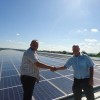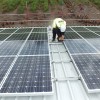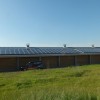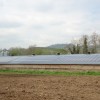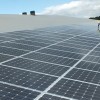A Brief History of Solar PV Pioneers
French Physicist, Alexander Edmund Becquerel, first identified the creation of voltage in a material exposed to light in 1839. The Photovoltaic Effect he observed is the same principle that today’s PV Solar Modules (panels) exploit generally using Silicone as a semiconductor. There were several attempts to make solar cells in the 19th century, but these early pioneering efforts enjoyed but a small success in generating meaningful amounts of electricity. The cost of power generation was astronomical.
Albert Einstein described the Photovoltaic Effect in 1905, receiving the Nobel Prize for Physics for this work some sixteen years later. It wasn’t until the 1950’s when scientists working for Bell Laboratories (USA) made a breakthrough, creating what we would term the modern PV Cell. Even so, at $250 per Watt of energy produced Solar PV was around one hundred times dearer than coal fired electricity generation. It simply wasn’t commercially viable, back then, to develop for a mass market.
Space exploration effectively maintained a niche interest in Solar PV during the 1950’s as the earliest man made satellites relied on ‘limited life’ battery power. Conversely, Solar PV Cells provided power for a much longer time thanks to an abundant supply of sunlight in outer space.
Vanguard 1 was the fourth artificial satellite to be launched from Earth and the first to be solar powered. Weighing in at just 3.4 lbs, six separate solar cells were mounted between six extending antennae of the satellite’s 6.4 inch circumference aluminium spherical body. Launched in 1958 the satellite continued transmitting up until 1964. It remains in Earth orbit today – the oldest man made object to do so.
America’s Exxon was the next company to shape the future of the PV Cell in the 1960’s. Their central objective was to reduce the cost of producing 1 Watt of power. The company envisaged that, come the new Millennium, electricity would be a lot more expensive to generate to the point that solar PV cells would become commercially viable. How right that vision was! The key advances were the ability to apply electrodes and printed circuit boards directly onto Silicon wafers using lower cost, lower grade Silicon with a minimal loss of generation efficiency.
As Japan developed an electronics manufacturing based economy keen interest was taken in developing, producing and marketing solar modules. Sharp and Sanyo are currently the leading Japanese manufactures and the former has a module production centre in Wrexham.





